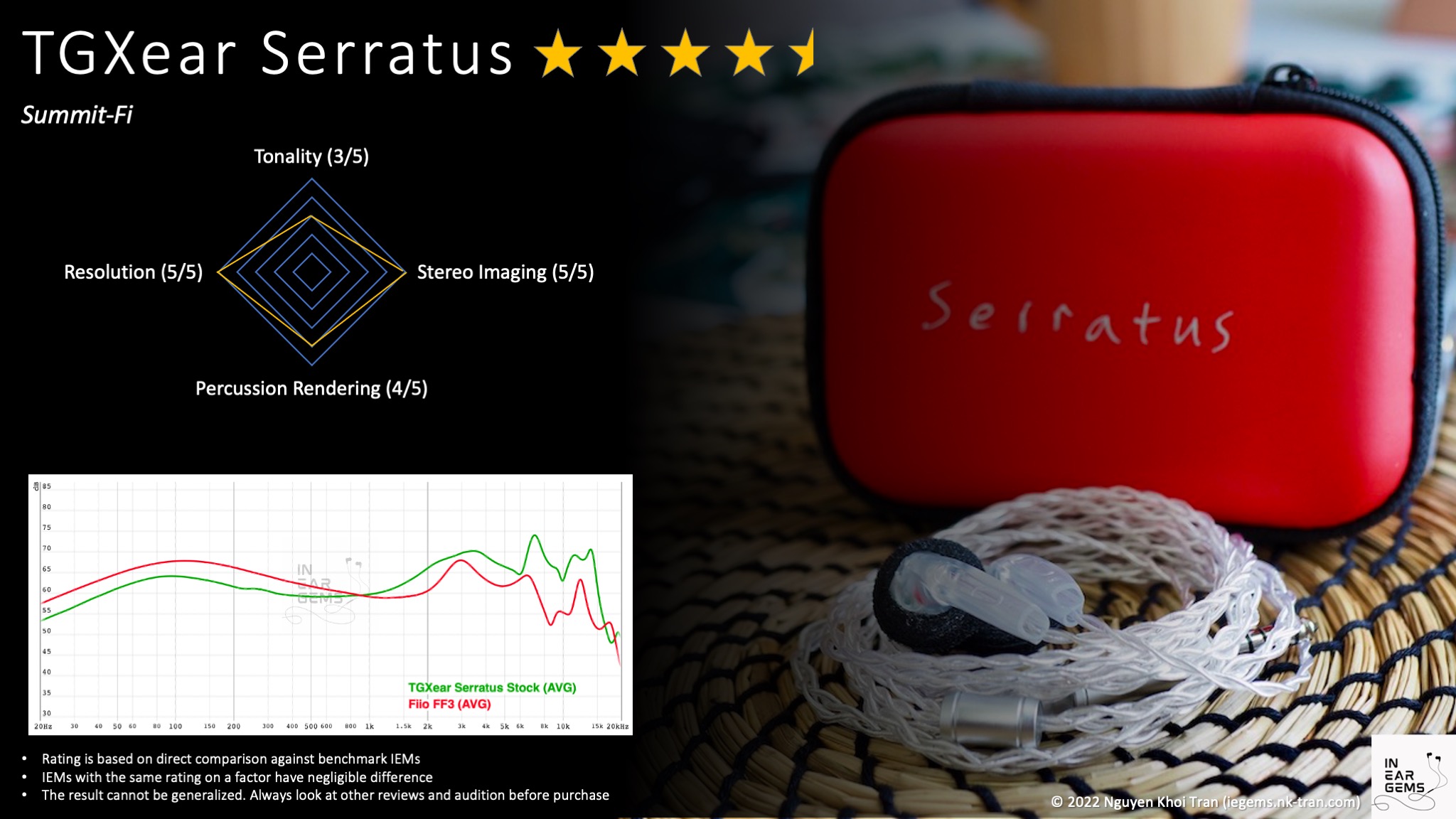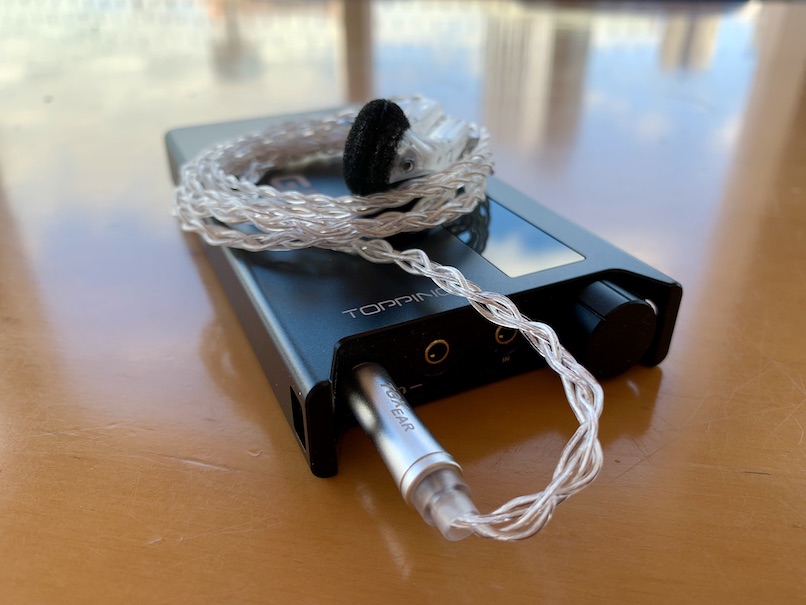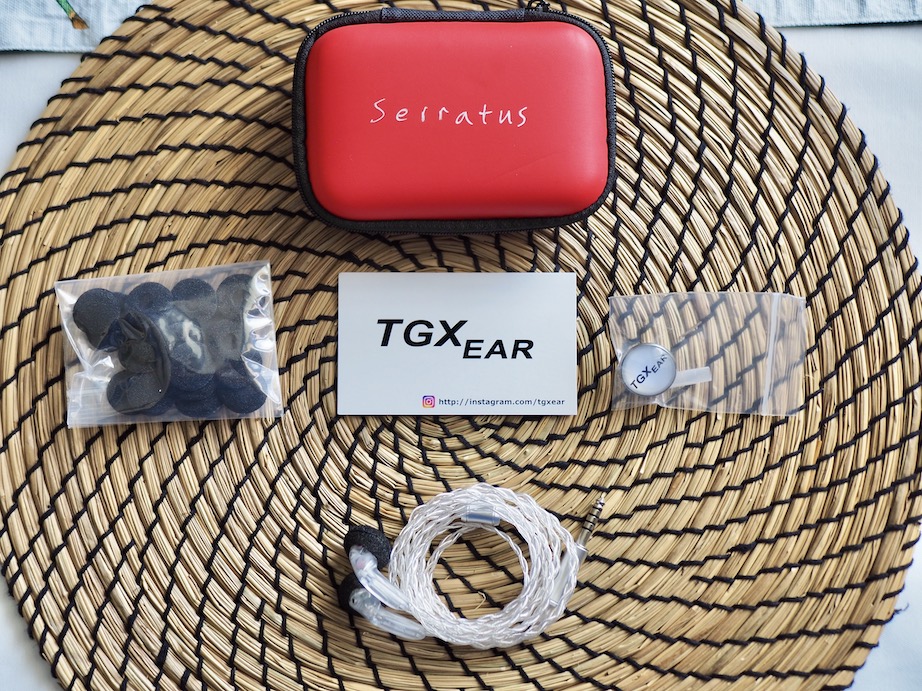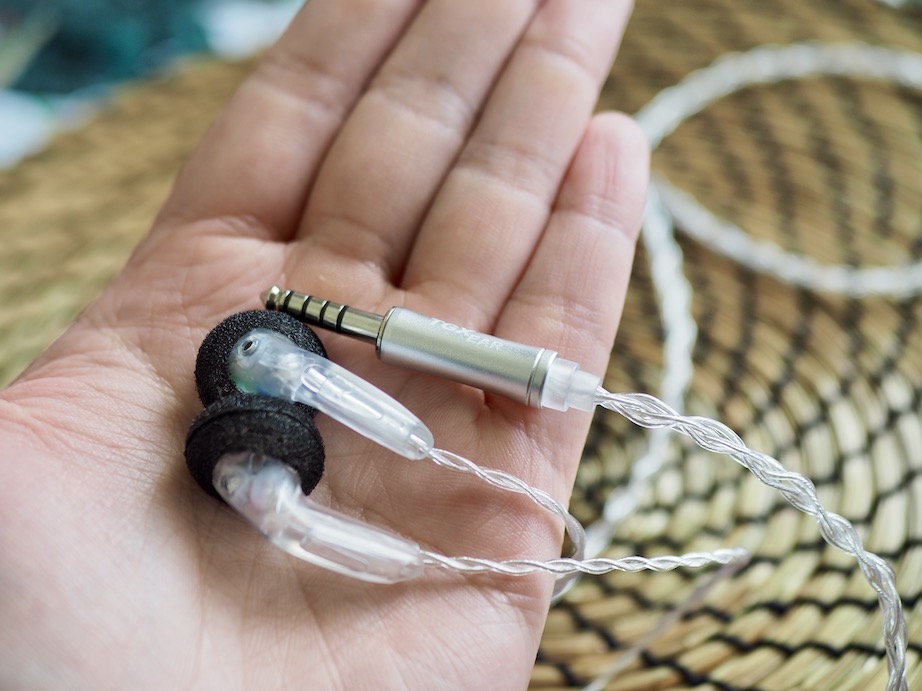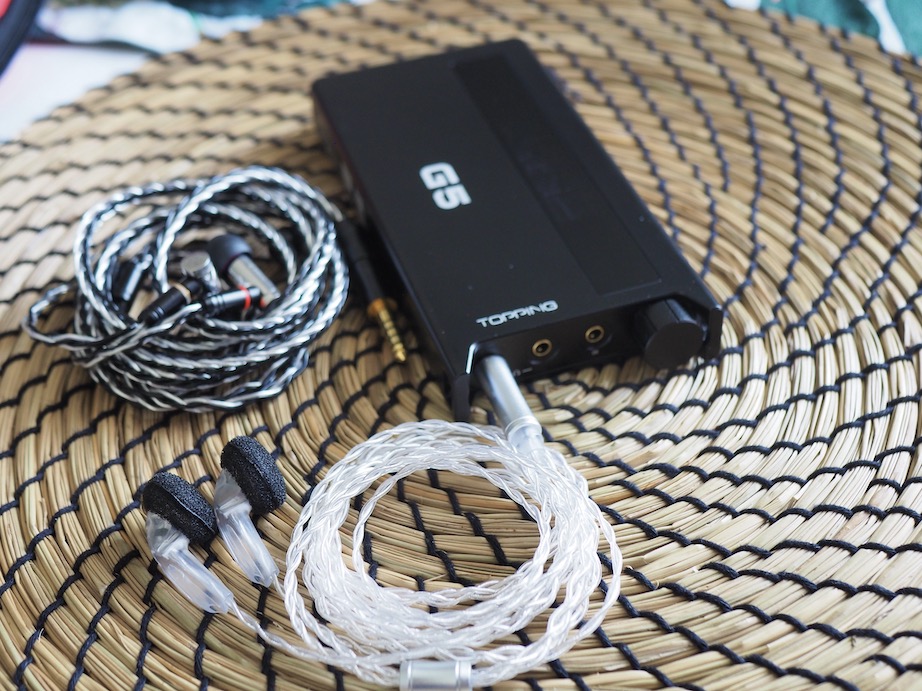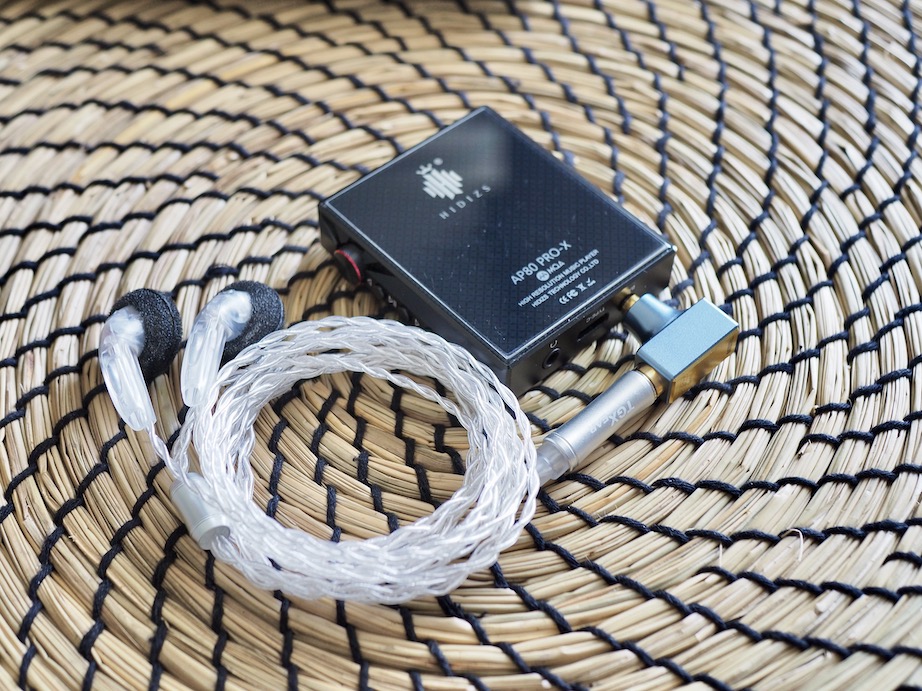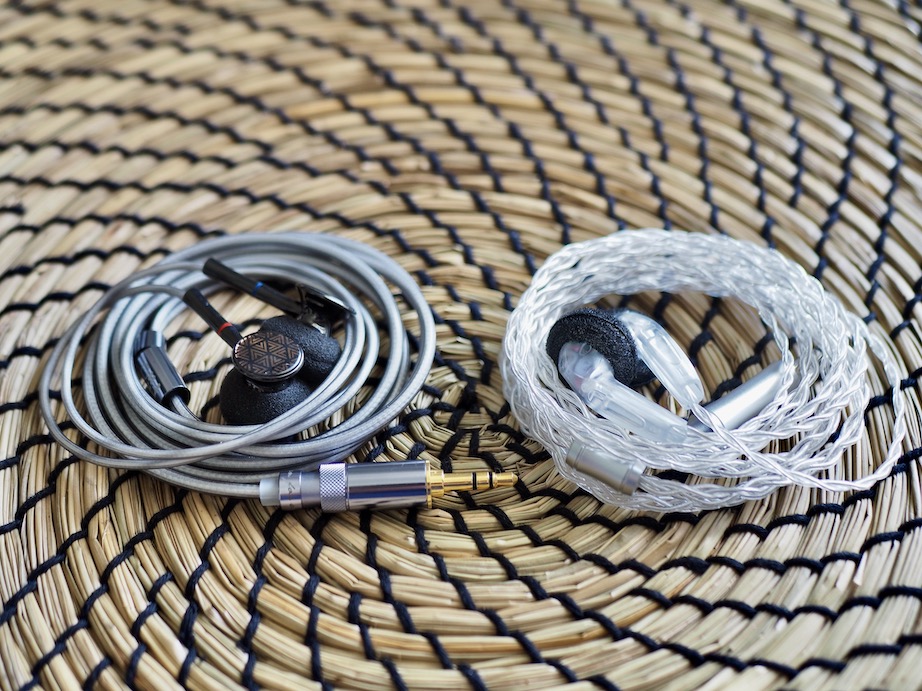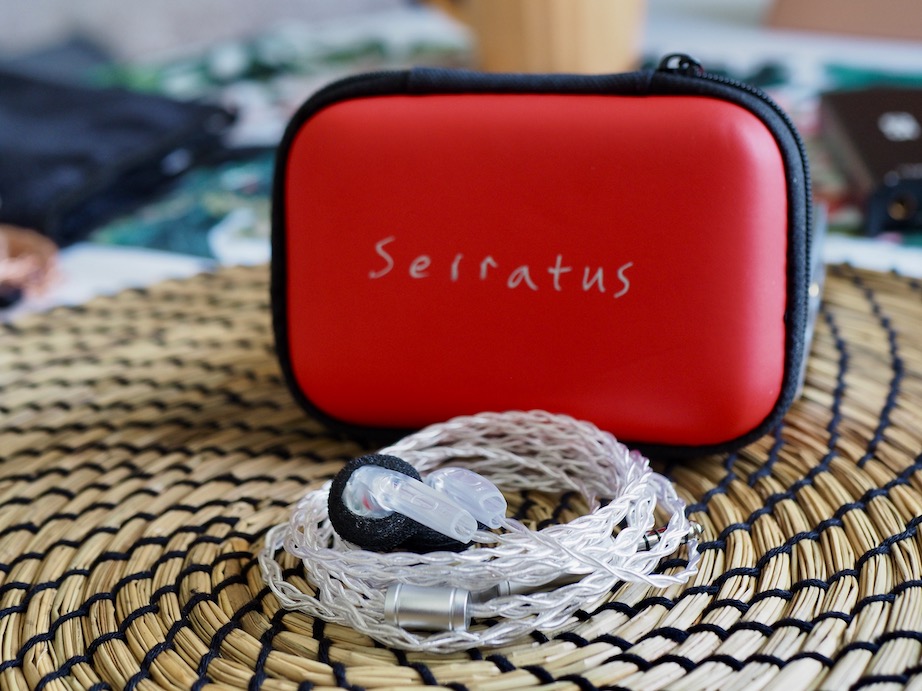TGXear Serratus - Summit
Reviewers are good at picking apart head-fi products. How do they fare when they build head-fi products themselves?
Pretty well, apparently. If you have been around head-fi communities recently, you would no doubt hear about the DIY flathead earbuds from tgx78, a long-term and well-known head-fier. Leading the pack is Serratus, flathead earbuds that, according to feedback from the community and reviewers, can trade blows with multi-kilo buck IEMs.
I have been daily-driving Serratus for a couple weeks to answer a burning question: does Serratus stand up to its hype?
Let’s talk about one of the most hyped DIY earbuds on the market.
Forewords
- I purchase this unit at a discount from tgx78 for this review.
- You should treat this review as the subjective impressions of an audio geek rather than an “objective truth” about the IEM. Your experience with any IEM would change depending on your DAC/AMP, music library, ear tips, and listening volume.
- I rate IEMs by A/B testing them against a few benchmark IEMs, regardless of price point. This approach ensures the consistency of the ratings in my ranking list. It means that if two IEMs score the same, they perform more or less similar.
- I believe that great IEMs are the ones that can achieve multiple difficult things simultaneously: (1) high resolution (meaning lines of music are crisp, clear, easy to follow and full of texture), (2) 3D soundstage with a strong sense of depth, (3) bold and natural bass with a physical rumble, (4) natural timbre, (5) relaxing and comfortable tonality.
- Ranking list and measurement database can be found on my IEM review blog.
Specs
- Driver: 15.4mm dynamic drivers with PET diaphragm.
- Connector Type: fixed silver cable with 4.4mm connector
- Impedance: 300ohm
- Sensitivity: unknown
Non-sound Aspects
I really like the presentation of Serratus. Don’t get me wrong, the packaging of Serratus is nothing like a premium product from an established manufacturer. Instead, the whole presentation of Serratus makes me think of a fellow audio geek who tried to make things as upscale and thoughtful as possible within their limited resources.
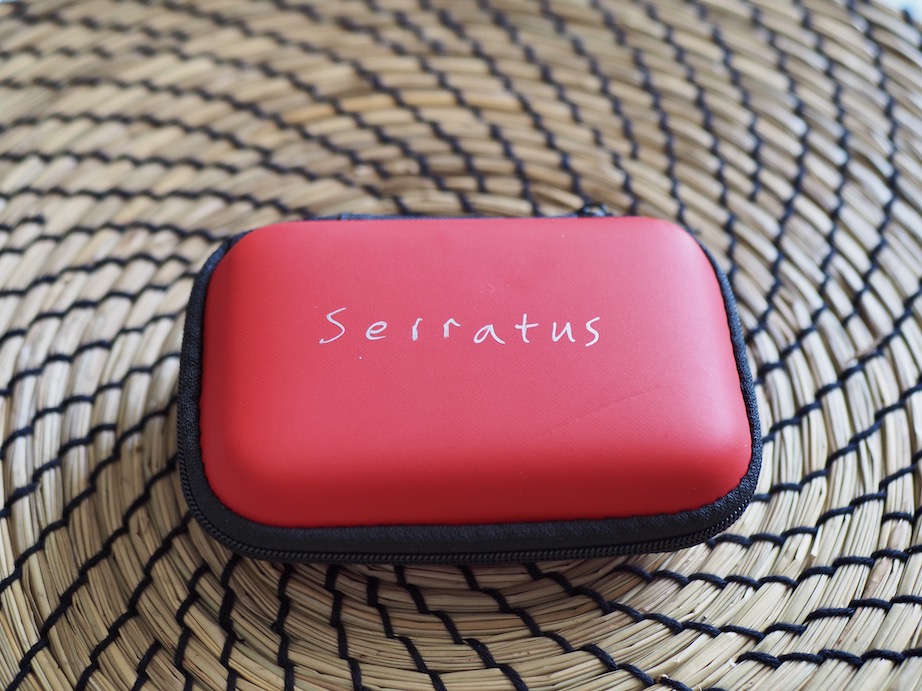
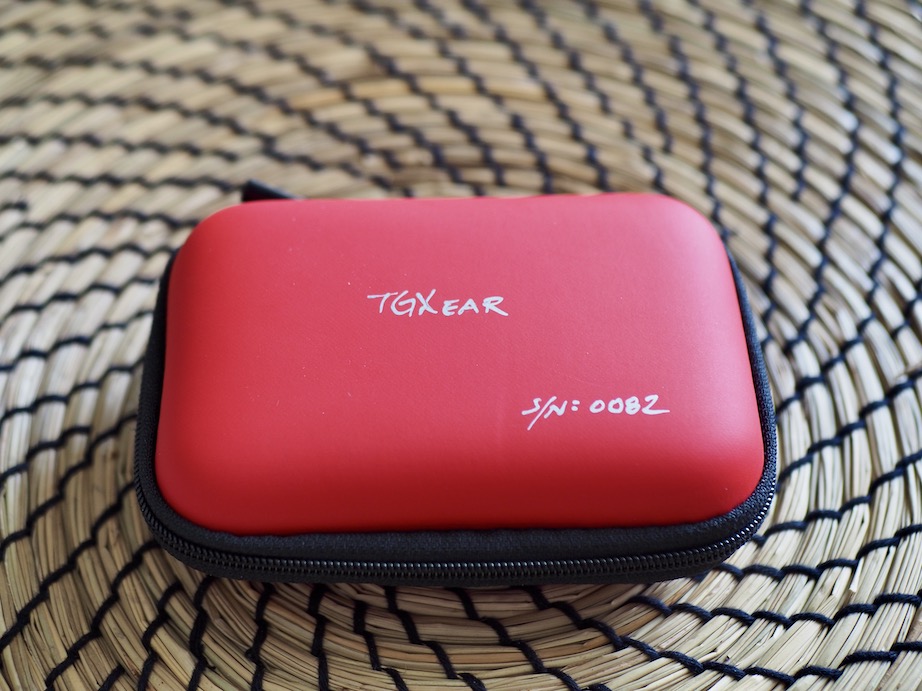
Serratus comes in a red carrying case with a handwritten product name and serial number (mine is 0082). Inside the case, you find:
- The earbuds themselves
- A business card showing how to wear flathead earbuds
- Many pairs of special thin foams for replacement. Serratus was tuned to use these foams.
- A TGXear metal pin.
- Silica beans (Candies! Just kidding, don’t eat them.)

The earpieces are made of frosted plastic and have the standard shape of Sennheiser MX500 shells. To help with identifying the left and right channels, tgx78 puts red and black tapes on the cable inside the shells. Red means right.
The cable of Serratus is not removable. Tgx78 told me that MMCX connectors have a high failure rate when worn in a cable-down position. Therefore, he decided to use a fixed, pure silver cable terminated with a 4.4mm balanced jack. The cable is a perfect match for flathead earbuds because it is very soft and light and therefore does not pull the earpieces out of my ears. The handling of the cable is superb. I really want a similar cable for my DIY projects. However, as far as I know, this cable is custom-made for tgx78 by XINHS.
How it sounds
Sources for listening tests:
- Topping G5 (for all A/B tests)
- Hidizs XO
- Hidizs S9 Pro
- Fiio KA3
- Shanling UP4
Local FLAC files ripped from CDs or bought from Qobuz were used for most casual listening and A/B tests. My playlist for A/B tests can be found on Apple Music here.
Tonality and Timbre: 3/5 - Average
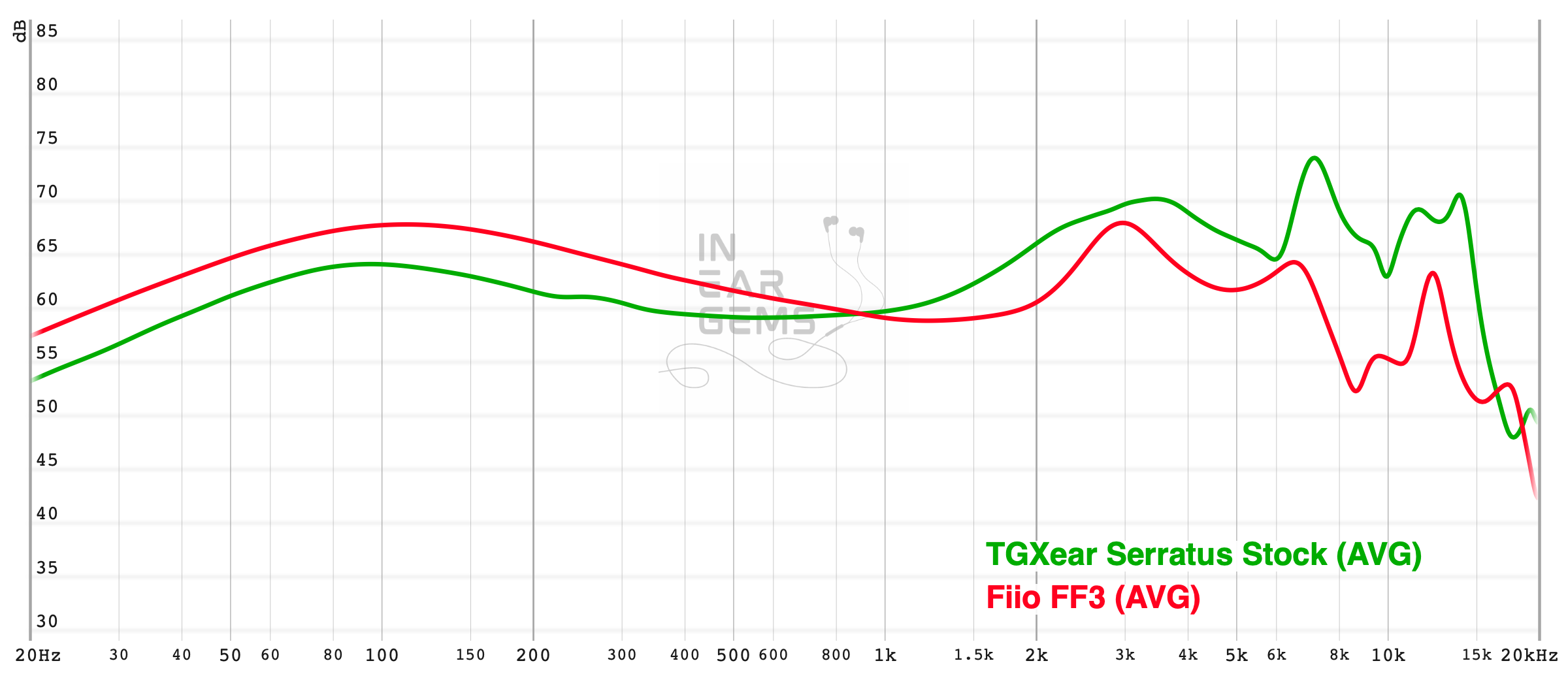 Frequency response of Serratus. Measurements were done with an IEC-711-compliant coupler and might only be compared with other measurements from this same coupler. Visit my graph database for more comparisons. You can also find the official graph by tgx78 here.
Frequency response of Serratus. Measurements were done with an IEC-711-compliant coupler and might only be compared with other measurements from this same coupler. Visit my graph database for more comparisons. You can also find the official graph by tgx78 here.
Tonality, tonal balance or “tuning” is where I have the most problem with Serratus. These buds can sound sublime with instrumental and orchestral recordings. However, they can turn strident and sibilant with particular vocals and YouTube videos. Let’s talk about Serratus’ tuning in detail.
Serratus has a neutral, almost “flat” midrange that invokes a great sense of transparency. That’s a lot of jargon, so let’s unpack the statement. By neutral, I mean that musical instruments and vocals are not overly boosted in lower frequencies to make them warm, dense, and “musical”. There is no insane boost in the upper midrange between 1kHz and 3kHz to artificially highlight midrange elements either. In fact, the midrange of Serratus is almost identical to that of Etymotic ER2SE in my A/B tests. Both present instruments and vocals as-is, without any attempt to “touch up”.
Due to the lack of warmth and loud high notes, instruments and vocals in the midrange are clear and open. Nothing overlaps or masks these elements, so I can easily hear the minute details that the drivers manage to distinguish. For example, let’s consider the “organised chaos” music of Polyphia, such as New Levels New Devils. Serratus renders all instruments with great separation, preventing them from mushing together into a blob of sound even when many things are happening simultaneously.
Why would one want a neutral or “flat” midrange? The transparency that I described previously is one advantage. Another is the correctness of the timbre of instruments and vocals. For example, when I listen to Goldberg’s Variations arrangement for violin, viola, and cello, I can easily distinguish the instruments even when they play in the same range. Even with large orchestral pieces, all instruments are easy to recognise because they sound as they are supposed to.
Of course, there are valid reasons why you want something other than a perfectly neutral midrange. For example, if you are used to head-fi gears with a bit extra “warmth” in the lower midrange around 250Hz and 500Hz, you will feel Serratus a little cold and thin. For example, Andrea Bocelli sounds colder and less emotive in Besame Mucho with Serratus comparing to other gears with slight colouration such as Fiio JD7. The cello of Mischa Maisky in Bach Cello Suites also sounds dry. This kind of midrange presentation may be authentic, but we don’t always want perfect authenticity for enjoyment.
The treble region is where I have the most problem with Serratus. Before we go on, let me just quickly clarify the terminology, as treble region covers a wide frequency range:
- 5kHz region controls the note attacks, such as sticks hitting the snare drums or guitar pluck. I call this region the lower treble.
- 8kHz region controls the cymbals, hi-hats, chimes, and vocal sibilant (the sss sound when a singer or a narrator hits a word with the letter “s”, “sh”, “ch”, or “z”). I call this region mid-treble.
- 12kHz region controls the degree of the metallic tint of the overall tonality of IEMs or earbuds. For example, some IEMs render vocals with harshness that feels “metallic”. The culprit is usually too much energy around 12kHz.
- 15kHz or “air” control the perception of stage and micro details such as reverb of sound in a room. You might not hear 15kHz, but you can feel it. You can use EQ to add a lot of 15kHz and hear the soundstage expanding. Excess 15kHz can make the overall tonality a bit uncanny.
Serratus’ treble response is characterised by a significant 5kHz dip, a prominent peak at 8kHz, and well-balanced and controlled from 12kHz up. The 5kHz drop is good because it smoothens Serratus’ response when rendering instruments rather than emphasising every note. The prominent peak at 8kHz is troublesome, however. Suppose you have a trebly DAC/AMP and you want to listen to sibilant songs such as Ed Sheeran’s Shivers or Bon Jovi. In that case, you might cringe whenever the singers hit high notes or sibilant words. To my surprise, even Joshua Valour’s videos can be sibilant with Serratus.
Serratus is not bass-shy. Its bass response focuses on the sub-bass, meaning Serratus emphasises the thumpy feeling in your eardrums, throat, or chest when bass notes hits. The mid-bass is not overly boosted but not neglected. You can still hear “boom boom” sounds if your music has them, but Serratus does not actively try to make everything “boom boom” like some bass-boosted IEMs.
How do I rate the tonality of Serratus? It depends on the genre. For instrumental and orchestral music, I’ll say 4/5. For harsher genres or even some YouTube videos, 2/5, as Serratus can be tiring and strident. That’s why I converge to the 3/5 rating for Serratus tonality.
Percussion Rendering: 4/5 - Good
Percussion rendering reflects how well the tuning and technical performance of an IEM work together to recreate realistic sound of a drum set. Good drum hits have a crisp attack (controlled by frequencies from 4kHz to 6kHz), full body (midbass frequencies around 200Hz), and physical sensation (sub-bass frequencies around 50Hz). Good technical performance (“fast” driver) ensures that bass notes can be loud yet detailed. IEMs that cannot control bass very well tend to reduce the bass’ loudness to prevent muddiness.
You will be pleasantly surprised if you listen to Serratus with the expectation that it cannot do bass. The bass of Serratus extends deep into the sub-bass yet maintains a clean bass response, likely thanks to the PET drivers and the custom bass tubes that tgx78 adds to the back of the earpieces.
For instance, the first bass drop at 0:17 of G.O.A.T. feels like a quick punch “POW!” that I can feel around my the nape of my neck. At the same time, the bass notes from the drums only linger as much as they need to. The bass line’s cleanliness is shown clearly from 2:40 onward of the track. Every bass note hits sharply with significant impact but does not mush into the ones after.
How does Serratus compare to my benchmarks? Firstly, it clearly outperforms my Blessing 2 (3/5) in terms of impact and “speed”. The jumps in volume at the beginning of the bass notes of Serratus are simply larger and faster. If Serratus’ kick drums are “POW!”, Blessing 2 are rounded punches to a pillow.
On the other hand, Serratus is no match against the massive and textured bass notes of a fully-driven Final E5000 (5/5). The bassline of E5000 produces a rumble in my chest at around 2:22 of G.O.A.T.. Of course, Serratus can win regarding the cleanliness of the bass line, but it’s not a match in terms of sheer power, rumble, and impact.
Before we conclude, let’s compare Serratus with Fiio FF3 (4.5/5), a pair of earbuds with superb percussion rendering. Right off the bat, I hear these earbuds pursue different responses. Serratus provides a more Harman-ish, sub-bass-focused, agile, but hard-hitting response. FF3 follows a more “old school” bassy approach with big, enveloping bass. FF3’s bass line is not as crips, but it is still clean and full of texture and liveness. Which one is better? It’s up to you and your music library.
How do I rate Serratus’s percussion rendering? 4/5 - Good. It sounds like a modern high-end IEM.
Resolution, Detail, Separation: 5/5 - Outstanding

Resolution is a fascinating subject due to the difficulty of pinning down what it really is. To me, the resolution is closely tied to how many quiet and minor details you can hear. Of course, if you turn the music louder, you can spot more details. However, you can only turn up the volume if the tuning does not have random peaks that stab your ears and mask minor details around them. Moreover, you can only hear details if the drivers manage to separate them rather than presenting a blob of sound. Earphone DIYers very well recognise this “true resolution” difference between drivers.
Serratus is an outstandingly resolving. Thanks to the transparent midrange tuning, I can hear nuances in instruments and vocals without much effort. The 300ohm drivers in Serratus do an exceptional job distinguishing similar sounds and breaking down blobs of sounds into small details.
In my A/B tests, it is clear that the true resolution of Serratus at least matches my Andromeda 2020 (5/5) across the frequency range. For example, when I listen to I Vow to Thee, My Country by Westminster Abbey Choir, I can hear the voices in the choirs rather than just blobs of vocal sounds. Serratus even slightly out-resolves my Andromeda in the bass and lower midrange region, where the BA woofers in Andromeda do not do a very good job. For instance, I can hear the subtle reed and air sound of the clarinet (or oboe?) from around 0:20 of And the Waltz Goes On with Serratus, but I can’t with my Andromeda. Shocking.
So, when you see impressions online that Serratus can compare with multi-kilo buck IEMs in resolution, they are not (totally) hyping. The only limitation of Serratus is the 8kHz peak that masks some details and sometimes forces me to reduce the volume. Still, when you listen to Serratus, you are listening to a top-tier level of resolution. 5/5 - Outstanding.
Stereo Imaging (Soundstage): 5/5 - Outstanding
Stereo imaging or “soundstage” is a psychoacoustic illusion that different recording elements appear at various locations inside and around your head. Your brain creates based on the cues such as the loudness and phase differences between the left and right channels. Most IEMs do not differ significantly, nor can they compete with headphones or loudspeakers. However, some IEMs offer a more spacious soundstage than others. Best IEMs can create multiple layers of sound from closer to further away and make some instruments float slightly above your head.

Flathead earbuds have a massive advantage in soundstage imaging compared to IEMs. Serratus is no different.
In terms of soundstage size, like most decent flathead earbuds, Serratus can project as far as some close-back or semi-open-back headphones. My HD560s is still a bit larger. Still, if you come from IEM, the size and openness of the soundstage would surely impress you. Of course, because earbuds do not have a passive soundstage like loudspeakers, your soundstage experience would rely a lot on the music you listen to.
There must be more than just a large soundstage to produce a good experience. The stereo image produced within that soundstage matters. I am glad to report that I can hear a clear sense of depth and layer with Serratus. Moreover, due to the 8kHz, Serratus is adept at creating the illusion of height. When I listen to And the Waltz Goes On, some instruments appear above rather than around my head. Realistic? No. Fun? Yeah.
5/5 - Outstanding soundstage imaging.
Source Pairing
Despite having an impedance of 300ohm, Serratus can easily get loud. You can get loud and clear sound from almost every audio source with a balanced output.
However, getting loud is different from getting the full performance. Moving from G5 to Hidizs AP80 ProX (balanced), I hear a smaller and more congested soundstage with the movement 3 of Summer performed by Janine Jansen.
Most dongles in my collection, such as Hidizs XO, are not better than the tiny DAP. They can squeeze decent sound out of Serratus, but they cannot project the same soundstage and separation as the G5.
A few unusual dongles can approach the performance of G5 with Serratus. For instance, the Hidizs S9 Pro drive Serratus to almost the same level as Topping G5 at only a 5/32 volume level. However, the S9 Pro is a touch less resolving compared to G5. The VE Megatron also drives Serratus well, though the soundstage feels a bit shallower, and the layering illusion is less noticeable than G5.
Some Comparisons
In this section, I compare Serratus with some relevant earbuds. You can use my ranking list to compare Serratus with others. Due to how I rank IEMs, if two IEMs score the same, they perform more or less similarly.
Fiio FF3:
- Serratus sounds edgier but at the same time more lively and sparkly, thanks to the extra treble peaks.
- Serratus has an “academic”, “well-tuned” bass tuning, whilst FF3 has an old school and fun bass response.
- Serratus has noticeably better resolution.
- Serratus has more 3D stereo images.
VE Master:
- Both follow a similar sound signature with natural, lean, and open midrange.
- Both aim for a clean bass line, but Serratus extends into sub-bass, whilst VE Master rolls off the cliff early.
- Serratus is edgier than VE Master.
- VE Master is fancier looking, but Serratus is more comfortable due to its low weight.
Conclusion
Flathead earbuds are experiencing a renaissance, thanks to the effort of manufacturers like Fiio and DIYers. Serratus is a shining star of what flathead earbuds can do, especially the ones with high-impedance drivers and custom bass tubes.
My final verdict of Serratus? I respect it, even though I don’t find it entirely enjoyable. Should you buy Serratus? If you know that you have no problem with an 8kHz peak and enjoy an Etymotic-like midrange, then by all means. Of course, one can argue that you can always buy DIY components to experiment with and build your own top-tier earbuds. However, everyone needs to start from somewhere, and inspecting Serratus with your hands can be a masterclass experience.
Pros:
- Neutral and transparent midrange tuning
- Top-shelf resolution
- Top-shelf soundstage imaging
- Deep and clean bass response
Cons:
- Sibilant due to a mid-treble peak
- Can sound cold and thin if you are used to a wamer tonality
